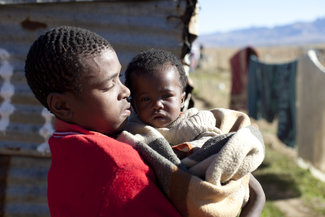

Displaying 111 - 120 of 573
By drawing on the experiences of parents, advocates, NGOs, and public officials, this side event invited discussion on how, through strengthening families and tools for prevention, societies can reduce the number of children being institutionalized. During the event, a panel of experts from the Republic of Moldova, South Africa, Burkina Faso, Vietnam, and the United States explored their experiences around efforts to empower parents and keep children with disabilities with their families.
By drawing on the experiences of parents, advocates, NGOs, and public officials, this side event will invite discussion on how through strengthening families and tools for prevention, societies can reduce the number of children being institutionalized.
In South Africa, large increases in early adult mortality during the 1990s and early 2000s have reversed since public HIV treatment rollout in 2004. In a rural population in KwaZulu-Natal, the authors of this study investigated trends in parental mortality and orphanhood from 2000–2014.
This publication presents the voices of nearly 200 children and young people from across the Southern Africa region who shared their experiences on how COVID-19 continues to have an impact on their lives.
This study provides evidence from an evaluation of a bespoke family strengthening intervention for Child Support Grant beneficiaries in 10 urban communities in Johannesburg, South Africa.
This paper aims to describe the experiences of youth preparing to age out of cluster foster care in South Africa.
This article interrogates concerns regarding the South African government's strict lockdown and related legislation in response to the COVID-19 pandemic and the beliefs that it advanced children’s vulnerability to abuse and neglect.
The aim of this study was to explore the experiences and impact of the pandemic and the resulting social isolation on the wellbeing and protection of children living in a residential care facility.
This paper explores kinship and other networks of support for young mothers and their babies after an unintended, ex-nuptial pregnancy in a resource-poor urban setting.
This article explores the impacts of COVID-19 on children in Botswana, including an increase in the number of child sexual abuse cases, and highlights the need for a clear road map on the prevention and response of the child protection system in Botswana.


